Subject to all recommendations for care, homemade dracaena are rarely affected by diseases and pests. If problems nevertheless arise, it is necessary to determine their causes as early as possible, since it is easier to save the dracaena the sooner treatment is started. It is recommended to inspect plants at least once every 2 weeks. The most common diseases and pests of dracaena, as well as other problems of their cultivation, are described below.
Pests
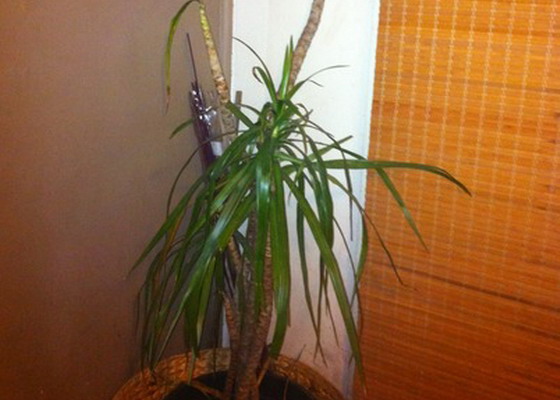
Sick dracaena in the photo
Pests do not often infect dracaena, sometimes they can be found on scale insects, thrips, mealybugs, aphids and spider mites. Below are the signs of damage and measures to combat these pests.
Scale insects are inactive insects 2-4 mm in size, covered with a grayish or yellow shield with a waxy coating. They suck the juice from the stems and leaves, which turn pale, dry up and fall off. Pests are removed with a sponge with soapy water, after which the plant can be treated with an insecticide (fitoverm, decis, Inta-vir, etc.).
Thrips, small (1-2 mm), insects that form colonies on the underside of the leaf plate, while the upper one is covered with light dots and acquires a gray-brown color. The appearance of the pest provokes high temperature and dry air.
Aphids damage the tops of the shoots and the lower part of the leaves, which curl and fall off. The leaves of a dracaena affected by aphids discolor and turn yellow.
To destroy aphids and thrips, insecticides are used, if necessary, repeatedly.
Mealybugs, white insects, covered with a floury coating, suck the juices from plants, which retards their growth. With a lesion on the leaf plates and in the center of the rosettes, you can see cotton-like waxy discharge. Insects are removed manually with soapy water or a cotton swab dipped in alcohol, after which they are treated with an insecticide 2 times with an interval of 1-2 weeks.
The spider mite, a small yellowish-green insect no larger than 0.5 mm, settles on the underside of the leaf, covered with small white spots, the affected parts are entangled in a barely noticeable cobweb. The plant lags behind in growth, is more prone to diseases. Ticks themselves are carriers of a number of diseases. Dracaena infected with a pest is treated with hot (about 50 ° C) soapy water, then sprayed with an acaricide.
Infectious diseases of dracaena
Of the fungal infectious diseases of dracaena, the following are found:
Alternariosis, light brown, or concentric spotting, a disease that manifests itself in the appearance of light brown, dry, rounded spots on various parts of the plant. In the center of the spot, concentric light and dark rings are clearly visible. In the future, the leaves of the dracaena turn black, covered with small spores of the fungus. Fungicides are used for treatment: topaz, oxychom and other copper-containing preparations. Sprayed at least 3 times with an interval of 10 days.

Heterosporosis, in which first yellow, then light brown spots with a dark edging appear on both sides of the leaf. In the future, the spots grow, spores of the fungus appear on them in the form of a dark coating. If no action is taken, the leaves, starting from the top, turn yellow and dry. Dracaena affected by the disease are treated with fungicides.
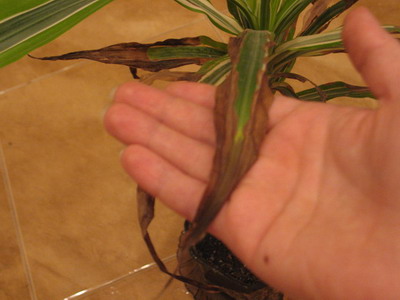
Phyllosticosis, brown spotting, affects old and adult leaves, they form large spots of round or irregular shape, pale brown with a greenish-yellow edging, eventually covered with black spores of the fungus. Provoking factors – increased or decreased humidity of air and soil. Fungicides are used for treatment.

Sometimes bacteriosis occurs on dracaena, a bacterial disease that manifests itself in softening and rotting of the tips of the leaves, or the appearance of brown decaying tissue areas on them, limited by a wide, oily yellow band. The appearance of small rounded ulcers on stems and petioles is also characteristic. Bacteriosis often develops under conditions of high humidity of air and soil, high air temperature, lack of nutrients in the soil, its low acidity. Spraying with water promotes the spread of the disease. Affected specimens are not subject to treatment, they are destroyed.
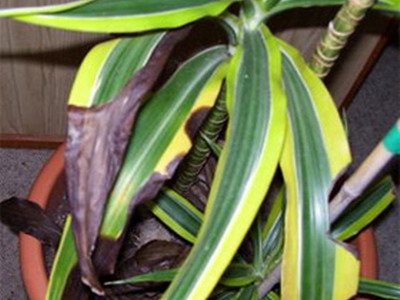
Occasionally, dracaena are affected by a dangerous viral disease, spotted wilt. Longitudinal strokes and brown spots appear on plants, they develop poorly, young leaves grow deformed and small. Diseased bushes are destroyed.

Problems of growing dracaena: brown or blacken, leaves turn yellow and more
Most often, plants suffer from non-communicable diseases caused by improper growing conditions and improper care. In this regard, amateur flower growers have the following questions:
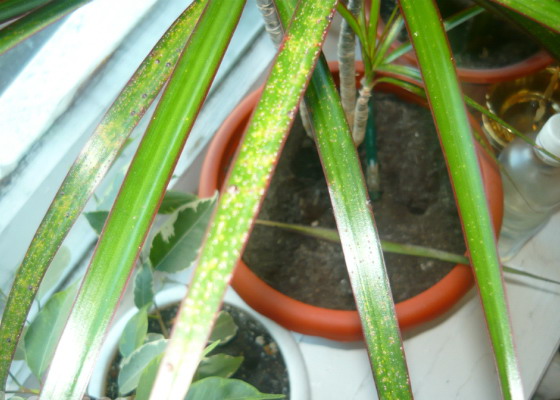
Why do dracaena leaves turn yellow? Yellowing of the lower leaves may be a natural process. The life span of an individual leaf is about 2 years, after which it begins to gradually die off, turning yellow from the top, and then completely drying out. This process lasts long enough, in order to preserve the decorativeness of the dracaena, it is recommended to cut dry areas. Note that even a part of the leaf plate left on the trunk continues to nourish the plant, so it is not recommended to remove them immediately. If young leaves begin to turn yellow and dry out, this is a sign of irrigation errors. Dracaena does not like dry soil, and does not tolerate overflow. The earth ball should always be wet, but the top layer should dry out.

Why do the tips of dracaena leaves dry? This behavior of the plant indicates the dryness of the air or soil. Drafts can also cause brown dry spots along the edge of the leaf plate. Drying out of the tips may indicate a lack or excess of nutrition. The flower needs to create favorable conditions, if necessary – to transplant.
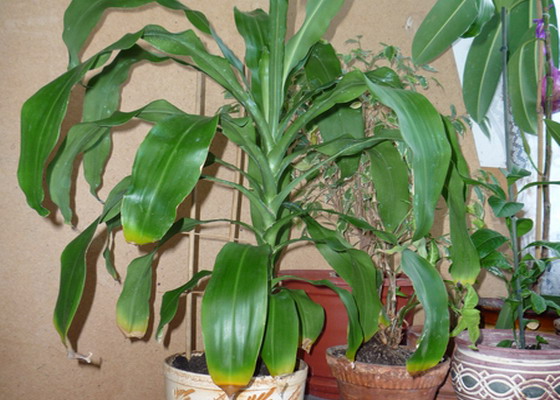
Why did the dracaena lower the leaves, did they fade? The plant was exposed to cold air. You can try to save him by placing him in heat and spraying with warm water. The same thing happens if the dracaena roots rot, which happens if the flower is kept at temperatures below 15 ° C. It needs to be transplanted, removing rotten roots, or, with a large degree of damage, re-rooted.
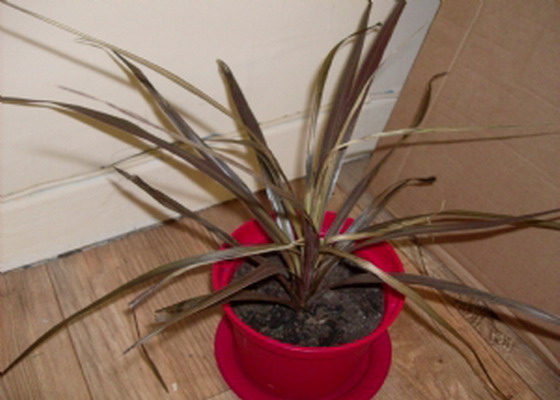
Why does the dracaena shed its leaves, does its young shoots dry up? Most often, this indicates a constant waterlogging and hypothermia of the soil. Such a plant must be re-cutting.
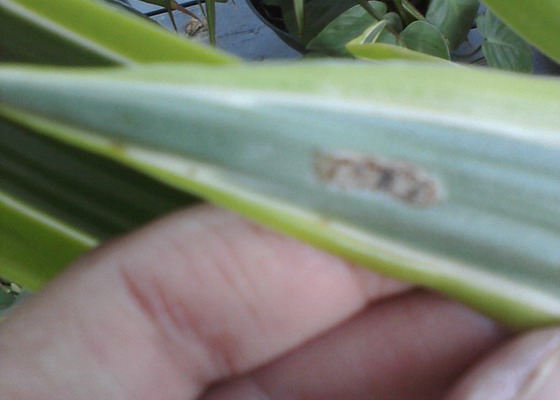
Why do dracaena leaves rot? If the damaged brown tissue is separated from the healthy green stripe, this is non-infectious decay caused by waterlogging, lack of heat and light. It must be distinguished from bacteriosis, in which a yellow border forms around the spot. The affected parts are removed and suitable conditions are created for the plant.

Why do brown spots appear? Spotted brown dracaena leaves can signal sunburn. In this case, they are first wet, then dry out. To avoid a problem, do not place the flower in direct sunlight.







